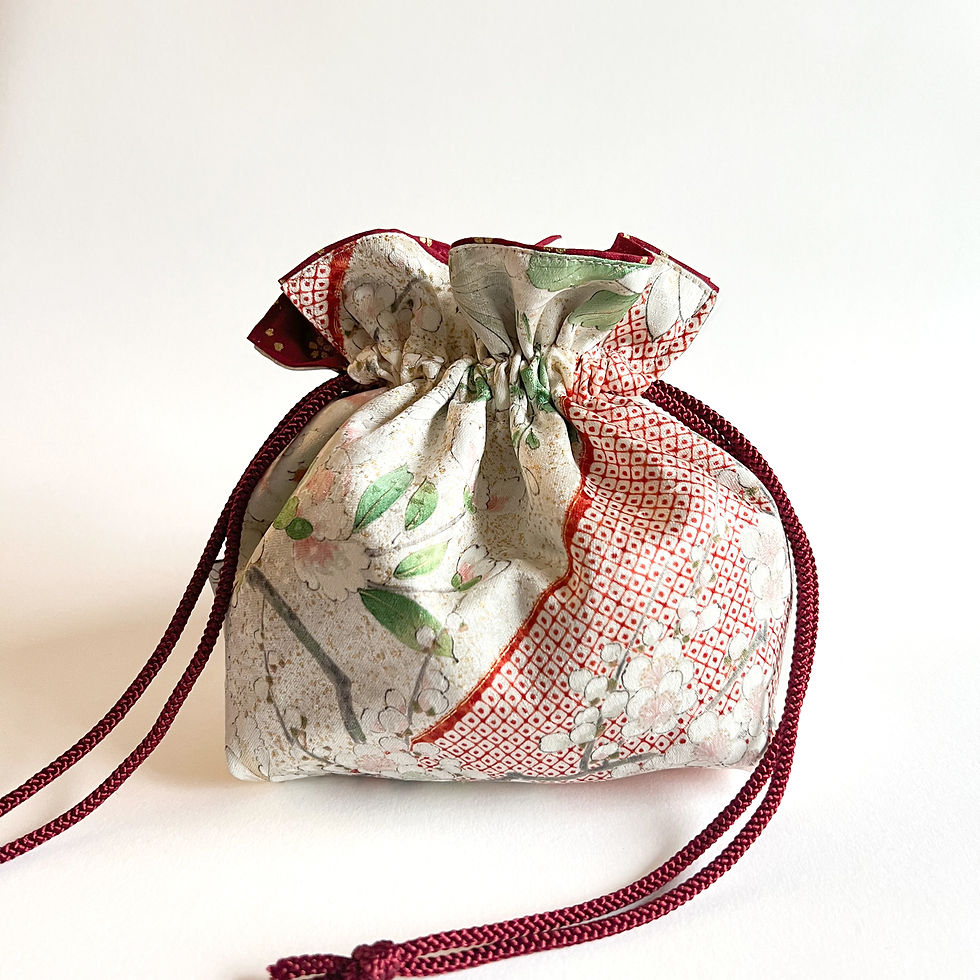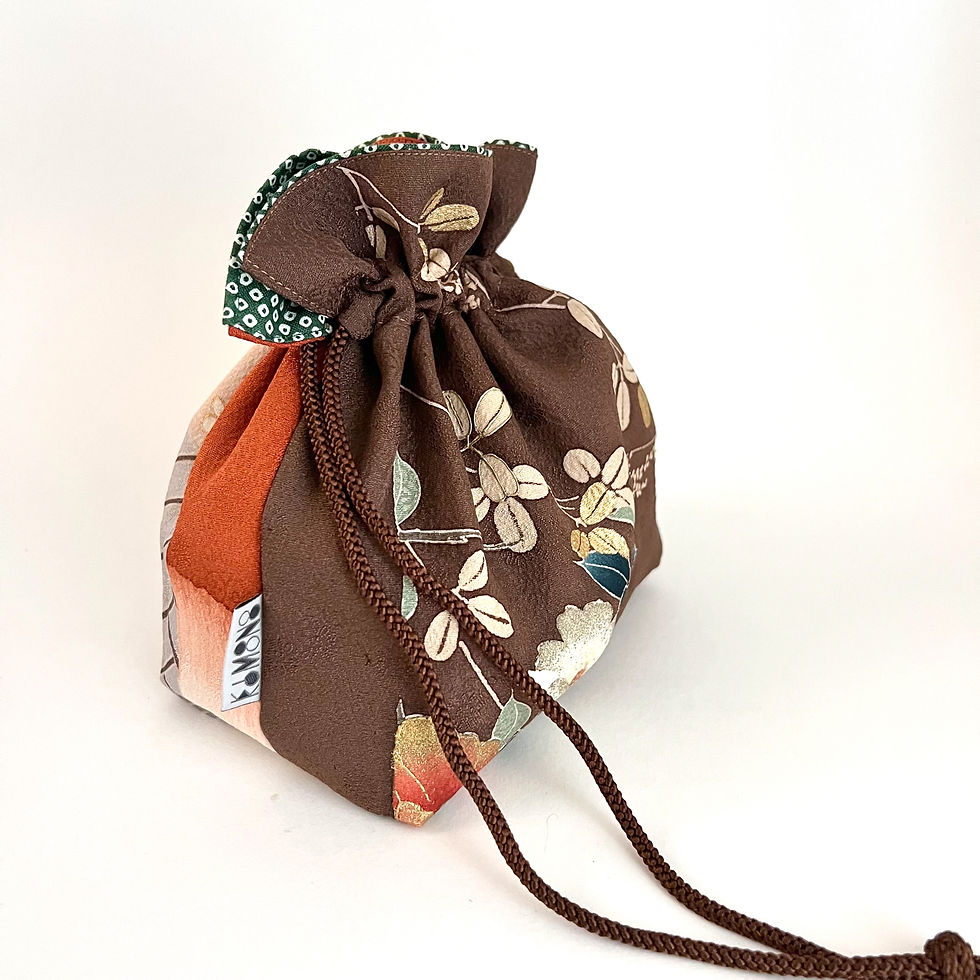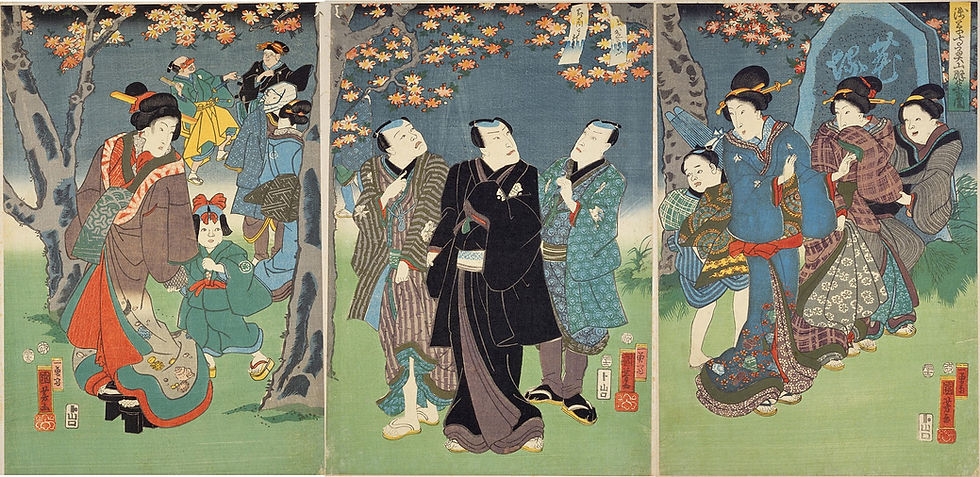What is Kinchaku and How to Use It?
- Megumi Watanabe

- May 4
- 2 min read

The Japanese word Kinchaku is written in Chinese characters (Kanji) 巾 "kin" meaning cloth, and 着 "chaku" meaning to wear, or to carry, together 巾着 meaning drawstring pouch, and it actually has been used since ancient times by various cultures to carry valuable items such as religious items, coins or medicines. In Japan, it is recorded that Kinchakus were being used by nobles and monks in Nara Period (710-794), and this has led to more widespread use.
By Edo Period (1603-1867), because of its practicality, it was used by general population. Kinchaku evolved in design and material, becoming more ornate and decorative, and became a fashion accessory as well as a simple practical item.

In modern times, Kinchakus are very widely spread in it use in Japan. I remember in home economics class in primary school, the first thing we were taught to hand-sew was a drawstring pouch.

How to Use Kinchaku
Kinchaku is a versatile bag that can be utilized in many ways. Here are some practical applications and tips on how to incorporate it into your lifestyle:
Special Occasion / Going Out Accessory
KIMONO KOMONO Kinchaku pouches are perfect to show off since they are made of carefully-selected silk or wool Kimonos with beautiful patterns. Most of our customers like to use them for going out occasions.
Everyday Use
One of the simplest ways to use a Kinchaku bag is as a casual purse. Its drawstring design allows for easy access to phone, lip balm, keys and other small things.
As a Gift
Beautifully handmade one-of-a-kind Kimono accessories are perfect as a gift. Not only they are pretty to look at, they are practical and easy to use.
Gift Wrapping
Kinchaku bags also serve as elegant gift wrap alternatives. Instead of traditional wrapping paper, use a Kinchaku to present your gift in a sustainable and beautiful manner. This adds a personal touch that can be appreciated by the recipient long after the gift is unwrapped.

Caring for Your Kinchaku
To ensure the longevity of your Kinchaku bag, it is essential to care for it properly. Here are some tips:
Cleaning: Depending on the material, you can carefully hand wash or spot clean the bag. Always check the care instructions if available. Most of the Kimono silk or wool may shrink when washed in water. If you must clean it, I recommend dry cleaning it.
Storage: When not in use, store your Kinchaku in a cool, dry place away from direct sunlight to prevent fading or damage.
Usage: Avoid overloading the bag beyond its capacity, which can cause stress on the seams and lead to wear over time.
Adhering to these care practices will help maintain the beauty and functionality of your Kinchaku bag.






Comments